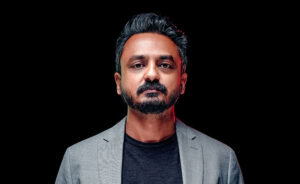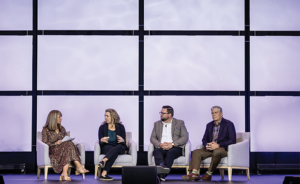
Brian Schaller is an AIA/NCARB Accredited Senior Project Designer working at HDR (Los Angeles). After starting at HDR New York in 2012 and moving on to Los Angeles for several years before leaving for a smaller firm in 2016, this experience allowed him to gain insight into projects with quick turnaround times as well as construction administration – while simultaneously realigning his career back into healthcare where design efforts can have significant positive outcomes for patients.
He rejoined HDR Los Angeles studio in 2017 and quickly emerged as a key design leader within a short period.
Since joining HDR in 2016, he has made significant contributions to key projects for HDR, such as an Intermountain Healthcare medical clinic in Las Vegas and the University of California San Francisco Helen Diller Medical Center at Parnassus Heights in San Francisco. More recently he led the design for Primary Children’s Wasatch Canyon Behavioral Health Hospital in Salt Lake City; working on this pediatric behavioral health center required being sensitive to children on the neurodiversity spectrum.
Schaller’s approach has led to innovative designs, such as one featuring window openings arranged according to the “ROYGBIV” order which dance across facades in an undulating pattern – not only visually aesthetically pleasing but also providing an intuitive pattern of window placements that also serve a functional purpose.
By eliminating randomness from design, it helps reduce potential negative stimulation for patients who may find chaotic environments distressful. Instead, it creates a welcoming and nonintimidating environment for pediatric neurodiversity spectrum patients and their families; this has required extensive understanding of how children perceive and interact with their surroundings; ultimately leading to a space that is approachable, calming, and supportive of children living on this spectrum.
His creativity and innovation has also earned him respect as an invaluable partner in healthcare projects, assisting clients better comprehend design concepts and make important decisions. For instance, during the Cedars-Sinai Marina Del Rey Hospital replacement project in Marina del Rey, California he recognized an opportunity to use architectural animations as part of his delivery service to advance its design further; usually animations serve as final design deliverables but here he saw their power to help clients make difficult decisions more easily.
Outside the office, Schaller is active with AIA LA Chapter’s Healthcare Group; Build Out Alliance; USGBC-LA Building Decarbonization Committee and has served as an organizer of Healthcare Design Forum held every year in Downtown Los Angeles. Furthermore, he was an integral member of BIONICA which won Healthcare Design 2022 Breaking Through competition; challenging people to think beyond current possibilities and expand upon current thinking practices.
Schaller is making an impactful contribution through his work by offering clients ideas that encourage them to think differently and explore innovative approaches and concepts, helping advance healthcare design sector.
Path to Healthcare Design: My path into healthcare design began with my college thesis on architectural healing environments. Exploring how spaces could provide people in their most vulnerable states with spaces designed to facilitate healing while remaining unobtrusive is something I am extremely drawn to, while simultaneously exploring how design contributes to this process – something which fascinates and intrigues me both at once!
Your design approach: Crafting spaces to facilitate healing: turning design into medicine.
Now on Your Desk: I’m currently immersed in a pediatric behavioral health project outside Salt Lake City. Growing up, I assisted my now-retired teacher mom with summer teaching programs for children – becoming deeply immersed in children’s world and providing valuable insight. Balancing both practicality and imagination, my goal is to bring delight and wellbeing for patients experiencing this campus – giving it both a playful yet serious design aesthetic.
At Cedars-Sinai Marina del Rey Hospital project in Marina del Rey, Calif. we were inspired by its complexity as an opportunity for elegant design within extreme complexity. This was truly rewarding project and one of our career highlights! Imagine an operating hospital close to its construction site for its replacement tower, bustling with ambulances, surgery services, imaging services, and imaging modalities that operate smoothly within feet. This complex project required meticulous planning, unwavering safety measures, and an unfaltering commitment to patient care; its outcome: A design that seamlessly combined innovation and necessity – its exterior resembling an ocean wave while contributing to creating a therapeutic healing ambiance at the hospital – something we are truly proud to boast about! Proud doesn’t even begin to describe our feelings.
What Success Means to You: Success in healthcare design means when every corridor and room you enter evokes a feeling of serenity and healing and hope are brought front and center by design, rather than architecture. Imagine our designs had Yelp reviews–five stars for calmness, tranquility, and magic; that is my definition of success: creating places where wellness and design collide to create environments in which well-being meets beauty in harmony.
Industry Challenge on Your Radar: In 2019, I hope for our industry to embrace adaptable spaces. Let’s make rooms as versatile as Swiss Army knives so they can accommodate changing needs easily and seamlessly. Adaptability remains key in an age of rapidly-evolved technology, AI, environmental shifts and global developments; designs should prioritize adaptability if they hope to compete successfully against global shifts such as AI-enhanced environments and global changes; for instance an exam room which can quickly transition to meditation oasis is something worth mastering!
Today’s healthcare designers must hone the art of empathy as their main weapon. Knowing the patient journey requires more than floor plans: crafting spaces that whisper healing is what every healthcare designer must be fluent in. I am thankful that my husband reminds me so often of its significance and reinforces why our daily efforts matter, helping me build up my capacity for empathy as an architect.
Read here for more details about the 2023 HCD Rising Stars.


